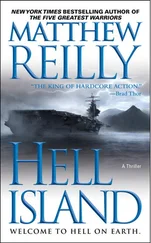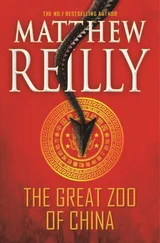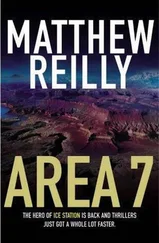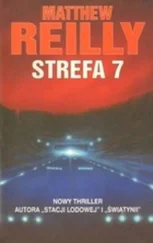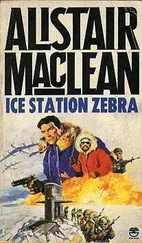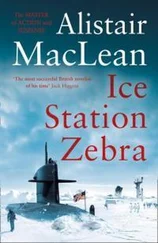Then Schofield reeled in the Maghook, leaving the Tritonal charge inside the torpedo tube. And then he swam. Swam for all he was worth.
Inside the torpedo room of the French submarine, the world was deathly silent. A young Ensign called the countdown.
"Vingt secondes de premier lancer," he said. Twenty seconds to primary launch. Twenty seconds to the launch of the eraser, a nuclear-tipped Neptune-class torpedo.
"Dix-neuf... dix-huit... dix-sept..."
From the iceberg Renshaw saw Schofield break the surface, saw him swimming frantically through the water, Maghook in hand.
The French Ensign's count continued. "Dix ... neuf... huit... sept..."
Schofield was swimming hard, trying to put as much distance between himself and the sub as he could, because if he was too close when the Tritonal charge went off, the implosion would suck him right in. He'd been ten yards away when he'd fired the Tritonal charge. Now he was twenty yards away. He figured twenty-five and he would be OK.
Renshaw was yelling at him, "What the hell is happening!"
"Get away from the edge!" Schofield yelled as he swam. "Move!"
"Cinq ... quatre ... trois ..."
The French Ensign's count never got beyond "three." Because at that moment?at that terrible, stunning moment?the Tritonal charge inside the torpedo tube suddenly went off.
From where Renshaw stood, the underwater explosion was absolutely spectacular, and all the more so because it was unexpected.
It was instantaneous. The dark shadow under the surface that was the French submarine spontaneously erupted into an enormous cloud of white. An immense spray of water fifty feet high and two hundred feet long shot up out of the water and fell slowly back down to earth.
From water level, Schofield saw a horde of monstrous blue bubbles suddenly begin to billow out from a gaping hole in the bow of the submarine, like tentacles reaching out for him. And then just as suddenly they began to retrace their steps and, with terrifying force, the bubbles shot back in toward the submarine and Schofield suddenly felt himself getting sucked back toward the sub.
Implosion.
At that moment, the massive French sub collapsed in on itself like a great big aluminium can and the suction from the implosion ceased. Schofield felt the water's grip on him relax, and he let himself float to the surface. The submarine was gone.
A few minutes later, Renshaw pulled him out of the water and dragged him up onto the iceberg.
Schofield dropped down onto the ice?breathing hard, soaking wet, freezing cold. He was gasping for breath, his body overwhelmed with fatigue, and at that moment?with the French submarine destroyed and himself and Renshaw hopelessly marooned on an iceberg?the only thing in the world that Shane Schofield wanted to do was sleep.
In the Capitol Building in Washington, D.C., the NATO conference reconvened.
George Holmes, the U.S. representative, leaned back in his chair as he watched Pierre Dufresne, the head of the French delegation, stand to speak.
"My fellow delegates, ladies and gentlemen," Dufresne began, "the Republic of France would like to express its total aid unconditional support for the North Atlantic Treaty Organization, this fine organization of nations that has served the West so well for almost fifty years ..."
The speech dragged on, extolling the virtues of NATO and fiance's undying loyalty to it. George Holmes shook his head. All morning, the French delegation had been calling recesses, stalling the conference, and now, all of a sudden, they were pledging their undying loyalty to the organization. It didn't make sense.
Dufresne, finished speaking, sat down. Holmes was about to turn and say something to Phil Munro when suddenly the British delegate to the conference?a well-groomed statesman named Richard Royce?pushed his chair back and stood up. "Ladies and gentlemen," Royce said in a very articulate London accent, "if I may beg your indulgence, the British delegation requests a recess."
At that very same moment, directly across the road from the Capitol Building and the NATO conference, Alison Cameron was entering the atrium of the Library of Congress. Comprised of three buildings, the Library of Congress is the largest library in the world. In fact, its goal upon its founding was to be the single largest repository of knowledge in the world. That is what it is.
Which was why Alison was not surprised to learn that the object of her search?the mysterious 1978 "Preliminary Survey" by C. M. Waitzkin?was to be found at the Library of Congress. If any library was going to have it, the Library of Congress would be it.
Alison waited at the Inquiries Desk as one of the library's attendants went down to the stack to get the survey for her. The Library of Congress was a closed-stack library, which meant that the staff got the books for you. It was also a non-circulating library, which meant that you were not allowed to take books out of the building.
The attendant was taking a while, so Alison began to browse through another book she had bought on the way to the library.
She looked at the cover. It read:
THE ICE CRUSADE:
REFLECTIONS ON A YEAR SPENT IN
ANTARCTICA
DR. BRIAN HENSLEIGH
Professor in Geophysics, Harvard University
Alison scanned the introduction.
Brian Hensleigh, it appeared, was the head of Harvard University's geophysics faculty. He was into ice core research?a study that involved extracting cylindrical ice cores from the continental ice shelves in Antarctica and then examining the air that had been trapped inside those ice cores thousands of years before.
Apparently, so the book said, ice core research could be used to explain global warming, the greenhouse effect, and the depletion of the ozone layer.
In any case, it appeared that for the whole of 1994 this Hensleigh fellow had worked at a remote research station in Antarctica collecting ice core samples.
The name of that research station was Wilkes Ice Station.
And its location: latitude minus 66.5 degrees, longitude 115 degrees, 20 minutes, and 12 seconds east.
At that moment, the attendant returned and Alison looked up from the book.
"It's not there," the attendant said, shaking her head.
"What?"
"I checked it three times," the attendant said. "It's not on the shelf. 'Preliminary Survey' by C. M. Waitzkin, 1978. It's not there."
Alison frowned. This was unexpected.
The attendant?her name badge said her name was Cindy? shrugged helplessly. "I don't understand it. It's just... gone ."
Alison felt a sudden rush of excitement as something occurred to her.
"If it's not there, wouldn't that mean that someone is reading it right now ?" she asked.
Cindy shook her head. "No, the computer says that the last time it was loaned out to anybody was in November 1979."
"November 1979," Alison said.
"Yeah, spooky, huh?" Cindy looked about twenty years old, a college student no doubt. "I got the name of the borrower if you're interested. Here." She handed Alison a slip of paper.
It was a photocopy of a Request Form, similar to the one Alison herself had filled out to get the survey.
The Library of Congress obviously kept every form on file?probably for exactly this situation.
On the Request Form, in the box marked "Name of Person Requesting Item," was a name:
O. NIEMEYER
"It happens," Cindy the attendant was saying. "This Niemeyer guy probably liked it so much that he just walked out with it. We didn't have magnetic tags on our books back then, so he probably just slipped out past the guards."
Alison ignored her.
She just stood there, entranced by the Request Form in her hand, by this twenty-year-old piece of evidence that had been sitting in a filing cabinet somewhere in the depths of the Library of Congress, waiting for this day.
Читать дальше

